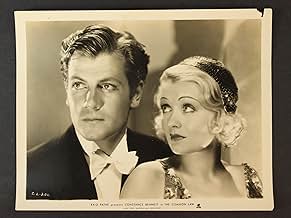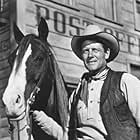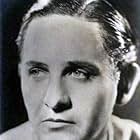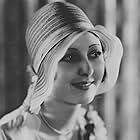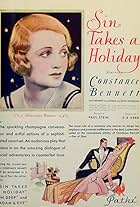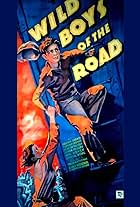Young Valerie models for an American painter who tries to make a future in Paris and they fall in love.Young Valerie models for an American painter who tries to make a future in Paris and they fall in love.Young Valerie models for an American painter who tries to make a future in Paris and they fall in love.
Emile Chautard
- Doorman
- (uncredited)
Albert Conti
- Strangeways Party Guest
- (uncredited)
Carrie Daumery
- Strangeways Party Guest
- (uncredited)
George Davis
- Charles - Dick's Butler
- (uncredited)
Julia Swayne Gordon
- Mrs. Strangeways
- (uncredited)
George Irving
- Doctor
- (uncredited)
Dolores Murray
- Queen at the Ball
- (uncredited)
Tom Ricketts
- Elderly Strangeways Party Guest
- (uncredited)
Marshall Ruth
- Strangeways Party Guest
- (uncredited)
- Director
- Writers
- All cast & crew
- Production, box office & more at IMDbPro
Storyline
Did you know
- TriviaThe screenplay was written by John Farrow. Five years later he married actress Maureen O'Sullivan, with whom he had seven children including actress Mia Farrow.
- Quotes
John Neville Sr.: You're getting more like your mother every day.
Mrs. Claire Collis: I should think that would make you very happy.
John Neville Sr.: It does. And a little apprehensive.
- ConnectionsFeatured in Thou Shalt Not: Sex, Sin and Censorship in Pre-Code Hollywood (2008)
Featured review
The common law in "The Common Law" is that a girl is better off married than living in sin. That's a message that the Hays Code censors could have gotten behind, but they never could have approved this 1931 film. In 1931, the Hays Code was in effect but the Production Code Administration and its tough boss Joe Breen, which rigidly enforced the Code, didn't come into existence until 1934. As a result, the studios were able to ignore the Code and get away with sexual themes that would soon become utterly unthinkable. This was a necessity in 1931 because sex brought people into the theaters and the industry was desperate to sell tickets during the depths of the Depression.
Valerie West, an American in Paris, makes her living by being the mistress of a rich American, Dick Cardemon, but she dumps him and starts a career as a nude model. She models for a mediocre but rich American painter named John Neville who falls madly in love with her. However, he evidently assumed she was a virgin because he dumps her when he finds out about Cardemon.
Later Valerie manages to pick up John once again at a very sexy Artists' Ball (there's a still photo of the ball in Vieira, "Sin in Soft Focus" (1999), p. 56). This time Valerie and John decide to live together without getting married, but that causes quite a scandal back home. John's snooty family tries to break them up, but...
The film is a very effective attack on the sexual double standard and on American upper-class conspicuous consumption, snootiness, and prudishness. Attacks on the upper class were quite popular in the early 1930's, given people's desperation in the Depression and the natural tendency to blame the rich for what happened. The film also shows that a smart, spunky, and beautiful girl can make very good despite having engaged in lots of free love (not to mention nude modeling) with rich men. Valerie is not punished for all that sin--in violation of the so-called "compensating values" norm later enforced by Breen and the Production Office. That norm would require that she receive some horrible punishment for engaging in extra-marital sex--but quite to the contrary, Valerie comes out just fine.
The film is an exceptionally interesting example of the kind of movies that were made at the beginning of the sound era but before the curtain came down in 1934 on candid treatments of sexual behavior.
Valerie West, an American in Paris, makes her living by being the mistress of a rich American, Dick Cardemon, but she dumps him and starts a career as a nude model. She models for a mediocre but rich American painter named John Neville who falls madly in love with her. However, he evidently assumed she was a virgin because he dumps her when he finds out about Cardemon.
Later Valerie manages to pick up John once again at a very sexy Artists' Ball (there's a still photo of the ball in Vieira, "Sin in Soft Focus" (1999), p. 56). This time Valerie and John decide to live together without getting married, but that causes quite a scandal back home. John's snooty family tries to break them up, but...
The film is a very effective attack on the sexual double standard and on American upper-class conspicuous consumption, snootiness, and prudishness. Attacks on the upper class were quite popular in the early 1930's, given people's desperation in the Depression and the natural tendency to blame the rich for what happened. The film also shows that a smart, spunky, and beautiful girl can make very good despite having engaged in lots of free love (not to mention nude modeling) with rich men. Valerie is not punished for all that sin--in violation of the so-called "compensating values" norm later enforced by Breen and the Production Office. That norm would require that she receive some horrible punishment for engaging in extra-marital sex--but quite to the contrary, Valerie comes out just fine.
The film is an exceptionally interesting example of the kind of movies that were made at the beginning of the sound era but before the curtain came down in 1934 on candid treatments of sexual behavior.
- Michael-110
- Jan 9, 2000
- Permalink
Details
- Release date
- Country of origin
- Languages
- Also known as
- Diosas de Montmartre
- Filming locations
- Paris, France(second unit, background and establishing shots)
- Production company
- See more company credits at IMDbPro
Box office
- Budget
- $339,000 (estimated)
- Runtime1 hour 14 minutes
- Color
Contribute to this page
Suggest an edit or add missing content







